I.D. YOUR PIPES FOR SAFETY AND CERTAINTY
Piping systems serve an essential purpose in assisting the flow and containment of commonly used gases, liquids and vapors for industry and commerce, infrastructures, personal health and comfort. But without uniform labeling regulations, trying to figure out their contents would be a futile, dangerous game. Today, thanks to the work of a number of regulatory bodies – and the fast, reliable Scott Machine pipewriting system – we can precisely identify what’s in our pipes, which way it’s flowing and the level of risk it poses. Here’s how we identify some of the most common elements found in pipes.
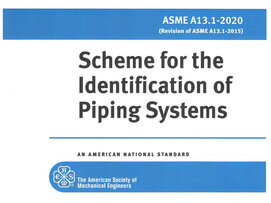
ASME A13.1 - 2020 PIPE MARKING SYSTEM
A uniform system for identifying and marking pipe contents was established, to promote safety, reduce confusion and ensure greater clarity, especially in emergency situations. Known as ASME 13.1, this regulatory marking scheme is especially helpful in situations where the contents are inherently hazardous. It employs identifying legends and specific colors to provide universally understood markings. The most recently updated scheme, ASME 13.1 – 2020, was published in 2020.
Learn More
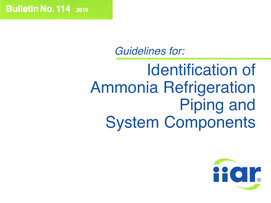
Ammonia Bulletin 114 for SAFETY LABELING
Piping identification is especially critical for potentially toxic gases such as ammonia. For that reason, ANSI A.13.1 regulations, when revised in 2007, stipulated that all labels for pipes containing ammonia should be printed in black on an orange background. These uniform guidelines were further developed by the International Association of Ammonia Refrigeration in their Bulletin 114, which designates a comprehensive labeling scheme for universal identification of ammonia refrigeration piping. Consistent labeling of this nature helps to promote safety, simplify maintenance and provide crucial information to emergency service professionals.
Learn More
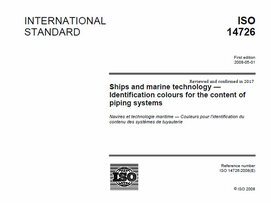
REG ISO 14726 SETS MARITIME LABEL SPECS
Thanks to regulations set by the Technical Committee for ships and marine technology, in International Organization for Standardization (ISO) 14726, we now have standard specific colors for identifying piping systems on board ships and marine structures. According to the guidelines, the colors may be applied to the pipe either as an adhesive-taped sign or painted in stripes. These content-specific colors allow for safer, more efficient handling of pipes damaged, or temporarily lost, at sea.
Learn More
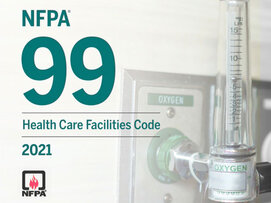
NFPA 99C/CGA C-9 – MEDICAL GAS MARKER STANDARD
Medical gas labeling standards were jointly established by the National Fire Protection Association (NFPA) and the Compressed Gas Association (CGA). The goal was to provide a uniform identification and marking system of medical equipment used with certain medical gases. Messaging, colors and placement of the labels are regulated to help minimize the possibility of fire, explosions or electrical shock.
Learn More
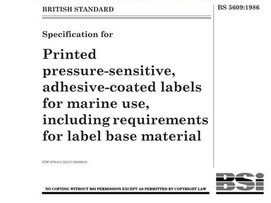
REG BS5609 LABEL DURABILITY
The BS5609 worldwide certification standard for polyolefin film relates to printed pressure-sensitive, adhesive-backed labels that can withstand marine and industrial settings. Testing includes 3-month exposure of the labeled test plates in saltwater, in mid-tide conditions. These labels need to undergo rigorous testing so that if the labels are applied to hazardous goods transported by sea, and lost or damaged en route, they can properly communicate the contents when found, for safe handling.
Learn More

